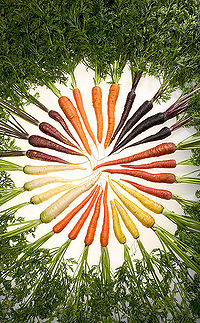Artificial selection
Artificial selection is a process conducted by man of selective breeding in order to select desirable characteristics in Animals plants and others organisms. In other words, this is when humans choose features in organisms they like and encourage this in other organisms. This was the first application of genetic principles made by humans.[1] Artificial selection is achieved by the practice, among breeders, of choosing a select group of organisms from a population to become the parents of the next generation.[2]
Applications
The power of artificial selection is illustrated by the tremendous diversity of shapes, colors, and behaviors of modern domesticated dogs.[1] Artificial selection continues to be the primary means whereby agriculturally important plants and animals are modified to improve the characteristics considered desirable.[3]
References
- ↑ 1.0 1.1 Pierce, Benjamin (2003). Genetics: A Conceptual Approach. W. H. Freeman. p. 75. ISBN 978-1-57259160-8.
- ↑ Hartls, Daniel L.; Jones, Elizabeth W (1998). Genetics: Principles and Analysis (4th ed.). Sudbury, Massachusetts: Jones and Bartlett Publishers. p. 683. ISBN 0-7637-0489-X.
- ↑ Ness, Bryan D. (revised edition); Knight, Jeffrey A. (first edition), ed. (2004). Encyclopedia of Genetics. Pasadena, California/Hackensack, New Jersey: Salem Press. p. 48. ISBN 1-58765-150-5.
